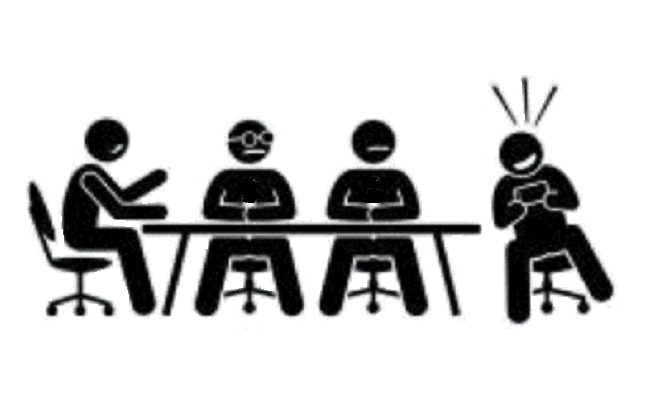Photo by NDE
Attention Deficit Hyperactivity Disorder ('ADHD')
/əˈtɛnʃ(ə)n/ˈdɛfɪsɪt/ˌhʌɪpərakˈtɪvɪti/dɪsˈɔːdə/ noun 1 is a neurodevelopmental disorder that impacts the part of our brain that helps us to plan, control impulses and execute tasks.
Aroreretini
noun 1 used in reference to having ADHD.
Origin: Māori, literal translation is 'attention goes to many things'.
Origin: Māori, literal translation is 'attention goes to many things'.
|
ADHD stands for Attention Deficit Hyperactivity Disorder and describes the unique structure of your brain.
A significant number of New Zealanders have ADHD, and for those of you who do, have many positive characteristics which are experienced alongside some challenges. Researchers who are passionate about ADHD have been helping to increase our knowledge and understanding of what makes ADHD unique. It's now clearly understood that the frontal lobe (prefrontal cortex to be specific) in the ADHD brain develops or mature at a slower rate. Generally, maturing is slowed by approximately three years in developing children and adolescents. |
|
The frontal lobe is responsible for:
As the development of the frontal lobe is slower and less matured than "typical" development it means the "neurodevelopmental delay" to the prefrontal cortex makes automatically controlling and filtering attention, behaviours, emotions etc so much harder.
One of the main ADHD symptoms is that your ADHD brain has to work much harder to control aspects that come naturally to others the same age, and this is the nature of the "disordered" part.
It's also the reason why you or your child experience significant fatigue by the end of the work or school day. This doesn't, by any means, make you less than your peers, however, but rather does make you different in terms of your developmental trajectory.
- filtering and controlling attention
- behaviour
- emotion
- energy or motor control
- judgement, and
- executive functioning - which includes your ability to plan and organise.
As the development of the frontal lobe is slower and less matured than "typical" development it means the "neurodevelopmental delay" to the prefrontal cortex makes automatically controlling and filtering attention, behaviours, emotions etc so much harder.
One of the main ADHD symptoms is that your ADHD brain has to work much harder to control aspects that come naturally to others the same age, and this is the nature of the "disordered" part.
It's also the reason why you or your child experience significant fatigue by the end of the work or school day. This doesn't, by any means, make you less than your peers, however, but rather does make you different in terms of your developmental trajectory.
What are the different types of ADHD?
|
|
Under the general understanding/diagnosis of ADHD, individuals usually fit into one of three different "presentations". This is because even with a diagnosis of ADHD, it's recognised that within ADHD everyone is different, and that presentations can change over time. However, there are commonalities that help to provide understanding of the more specific features of each type.
The three types of ADHD presentations are: |
|
ADHD - Predominantly Inattentive Presentation:
This presentation tends to be more prevalent in:
The main characteristics include an under control of attention, focus and concentration. Some impulsivity, behavioural and emotional hyperactivity and executive dysfunction are often also experienced but to a much lesser degree. |
|
ADHD - Predominantly Hyperactive and Impulsive Presentation:
This is the most well-known presentation of ADHD as childhood hyperactivity (including inappropriately high activity levels such as running, climbing, moving around) is more obvious, as is impulsive actions - which can lead to trouble with authority and peers. In adolescence and adults, as the brain matures, so too does the control level and the hyperactivity turns from major movement to more minor restlessness and fidgeting. The main characteristics include an under control of behaviour, activity (hyperactivity is sped up activity levels that are not lessened appropriately in given situations), and acting on impulses without controlling these with thinking before acting. Inattentiveness and executive dysfunction are often also present, though generally to a lesser extent. |
Signs of ADHD and ADHD symptoms include:
|
Inattentive behaviour
Easily distracted
Difficulties maintaining attention/ focus (especially when bored)
Daydreams or off-task
Makes silly mistakes
Trouble switching between tasks, getting lost
Difficulty keeping track or remembering instructions
Vertical Divider
|
Hyperactive behaviour
Constant activity
Restlessness
Fidgeting
Difficulty sitting still
Trouble switching off/ sleeping
Talks excessively
Vertical Divider
|
Impulsive behaviour
Acting without thinking
Interrupting people
Accident-prone as not thinking before doing
Blurts out answers/ secrets
Doesn't mean to do or say all the things done
Rushes into things
Vertical Divider
|
Emotional impulsivity
Big, raw and sudden emotions
Once calm it's over and as though nothing happened
Easily upset, angry or afraid
Easily frustrated or annoyed
Hard to calm down
Self-soothing is difficult
Vertical Divider
|
Executive functioning
Losing things
Not knowing what they're doing and when
Trouble organising thoughts onto paper
Poor sense of time
Often late
Doesn't mentally rehearse before entering new situations
|
Important facts about ADHD
Each of you will vary in the type, number, frequency and severity of your ADHD behaviour/symptoms. To determine if you, or someone you know, has ADHD and to get the best treatment, a specialist Paediatrician, Psychiatrist or Clinical Psychologist (but not an Educational Psychologist) assessment is needed. A list of healthcare professional providers can be found here.
|
ADHD has nothing to do with your intelligence
|
|
There's less stigma and more support for ADHD
|
|
Having ADHD also means that you have immense strengths
|
For more information have a look at our ADHD FAQs, find a healthcare professional, check out supporting organisations or contact us.






